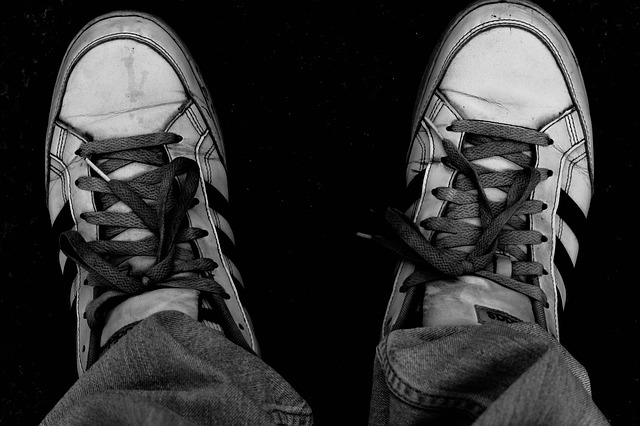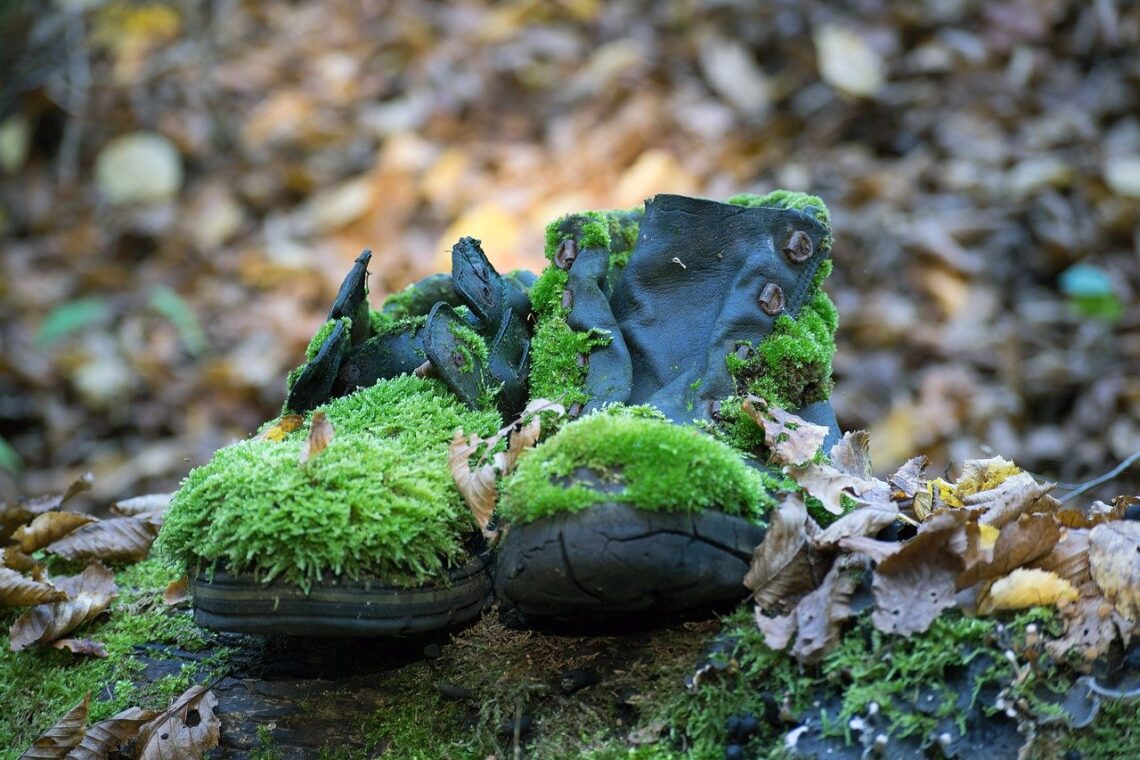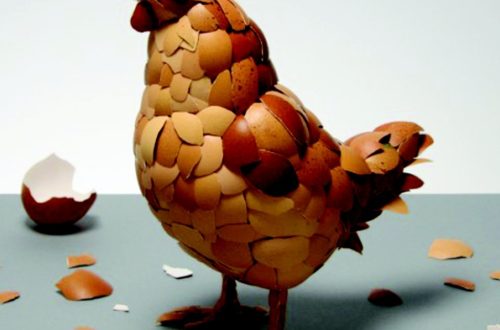Years ago, I slipped and fell in the Sierras on a backpacking trip because my beloved and comfortable hiking boots had traveled so many hundreds of miles on my feet that they had nearly slick soles. I condemned those boots to the landfill — oops! Turns out that I’m not Goody Two Shoes after all, since it takes more than 50 years for leather shoes to break down in a landfill. Apparently, they will still be there for some time after I’m gone.
Older and wiser now, I bought a quality pair of hiking boots to replace them. But with wisdom and age, also comes wider feet. Every time I take a long hiking trip in my higher-end boots, I get blisters. This time, I took my boots to one of the local shoe repair where the owner looked them over with the critical eye of a shoe surgeon, looked at my feet and my very large bunions, felt around inside the boot, and said “We can fix this very easily.” Cost: $12. You should see me out hiking happily and blister-free in the near future.
An incredible number of shoes end up in landfills each year because people don’t even consider other options. You can green up your shoe habits by following some of the advice from the Shoe Service Institute of America.
Buy Quality Footwear
Purchasing footwear isn’t just a fashion decision. It is a decision that affects your comfort and health both in the short term and over a period of years. Quality, repairable footwear gives your feet the support they need to bear up to their daily burden. It is a renewable resource that eases the burden on your bank account. It even eases the burden on the environment by staying in service for years instead of clogging landfills.
There are three keys to choosing quality footwear. First, look for a shoe with solid construction that will give your feet the support they need. Next, look for quality materials that will make your feet comfortable and keep them healthy. Finally, make sure you buy shoes that fit properly.
Footwear isn’t just part of your wardrobe, it is an investment. Spend your money wisely and the return will be more value for your dollar, more comfort, better foot health, and even a sense that you are helping the environment.
As with all investing, it is wise to have a counselor to make sure your money is well spent and continues to pay dividends. In the footwear arena, that counselor is your local shoe care professional.
Shoe Repair & Care
Shoe repair and shoe care make sense for several reasons.
First, shoe repair adds value to your footwear investment. Quality, well-maintained men’s shoes can be resoled seven to ten times at a fraction of the cost of new shoes. With new soles and heels, and reconditioned uppers, the shoes will look like new, yet retain that broken-in, comfortable feel. It is not uncommon for a man to get thirty years out of a good pair of shoes. Resoling hiking boots can cost between $50–$80, dress shoes $48- $65, and cowboy boots $50-$65. Quality women’s shoes can be resoled three to five times.
Shoe repair can also alleviate a variety of physical problems. Worn heels will change your gait. When you are not walking properly, your feet, ankles, knees, hips, and back can all suffer. Improper fit causes calluses, corns, and bunions. Shoe repair shops offer stretching services and fitting aids to alleviate those problems. Typically, they can stretch a shoe from a D to an EE in width. They can also add more space for toes or raise an instep. They can even stretch the calves on boots. If your shoes are too loose, you can pick up heel grips, tongue pads, and insoles to create a better fit.
Other shoe repairs include adapting shoes to fit unique feet, professional waterproofing, changing heel tips to non-skid rubber, applying heel savers to prolong the life of the heel, adding protective soles to increase the longevity of leather soles, and replacing eyelets and other hardware. Most shoe repair shops can even restore your Birkenstocks to like new, and for less money than the factory rebuild.
Another reason to have a shoe repair and shoe care routine is your appearance. Do you want to get ahead in the workplace? A nationwide survey showed that 89 percent of business recruiters rate good grooming as very important to becoming a senior executive. The most common mistake for men, and the second most common for women, is unkempt shoes.
On a personal level, two out of three young female professionals say unkempt shoes suggest negative characteristics of men in social situations. Half of the men felt the same about women with sloppy footwear. The most frequent negative character traits presented were sloppiness, indifference to good grooming and to detail in general, and carelessness. Shoes are a reflection of their owner’s personality.
Finally, shoe repair is among the oldest forms of recycling. Each year, the shoe repair industry keeps some 62 million pairs of shoes out of landfills and on consumers’ feet. So next time you invest in footwear, get some advice from a shoe repair professional. Shoe repair adds value to your footwear investment. Your neighborhood shoe repair professional can save you money, make your shoes more comfortable and keep you looking good.
Editor’s note: There are over 50 shoe repair shops in the Portland – Vancouver metro area. A Google search will give you an extensive list so you can find one near you.-GM
More Than Shoes
You can also visit the shoe repair shop with new shoes. Here are a few ways shoe repairers add value to new footwear.
- Protective soles can be applied to extend sole life and increase slip resistance.
- Shoes can be dyed if a color change is necessary.
- Shoes that are too tight can be stretched up to a quarter size.
- Plastic heels can be replaced with slip-resistant rubber.
- Shoes can be weatherproofed for added protection in wet or oily environments.
Your shoe repairers’ expertise isn’t limited to your feet. They can also:
- Replace Zippers
- Shorten belts
- Repair luggage
- Re-lace baseball gloves
- Stitch handbags
- Repair jacket tears
- Refinish leather coats
- Replace buckles
More Green Footwear Options
Besides increasing your shoe wardrobe’s longevity, here are some more tips for greening up your shoe lifestyle.
- Choose shoes made from natural materials instead of synthetics, which have lots of embodied energy and are often created with toxic processes.
- Choose shoes made from recycled materials like recycled plastic bottles or tires, although these materials, called “gypsy plastic” usually aren’t repairable because adhesives won’t stick to them.
- Donate old shoes. If you must get rid of your shoes, see if you can donate them to a worthy thrift store where someone else who needs them can extend their usable lifespan.
- Choose carefully and buy high-quality shoes that will have a long lifetime and are repairable.
Athletic Shoe Trends
If the thought of my old hiking boots haunting the dump for the next 50 years is disturbing, consider that if I throw away my old gym shoes, they’ll linger in the landfill for 1,000 years! According to Dan Shulters of Dan’s Shoe Repair, repairs to athletic shoes aren’t usually cost-effective because the uppers wear out at about the same time as the soles. The good news is that a couple of athletic shoe companies are tackling the problem.
Brooks, a manufacturer of athletic shoes, has developed and is using a material they call BioMoGo, which can biodegrade in roughly 20 years when placed in the landfill. In a very green gesture, they have made the formula available for other shoe manufacturers instead of patenting the process. By using BioMoGo in its shoes, Brooks predicts it will save nearly 30 million pounds of landfill waste over a 20-year period.
Don’t worry, the shoes are made with a special nontoxic additive and don’t biodegrade under normal use. They require specific landfill conditions of low oxygen, adequate moisture, and high microbial load to start biodegradation. Nonetheless, you should consider keeping your closet clean, just in case…
Nike, an Oregon shoe manufacturer, takes a different approach to the problem. Under their Reuse-A-Shoe program, they accept donations of up to 10 pairs of used sneakers at a number of locations across the United States and unlimited numbers of shoes sent directly to their recycling facility. The shoe soles are ground up and used for surfaces in kid’s playgrounds, sports parks, and other facilities.

Since the birth of Nike Grind in 1992, there have been more than 10,000 sports surfaces installed around the world, giving thousands of young people access to new playgrounds and athletic facilities around the world. The following list shows approximately how many pairs of recycled athletic shoes generally go into making each surface:
• Outdoor basketball court: 2,500 pairs
• Outdoor tennis court: 2,500 pairs
• Full field or soccer pitch: 50,000 – 75,000 pairs
• Mini soccer field: 10,000-20,000 pairs
• Running track: 75,000 pairs
• Playground: 2,500 pairs
• Indoor basketball court: 2,500 pairs
• Indoor synthetic basketball court: 2,500 pairs
To keep their recycling equipment running smoothly, they have a few guidelines for recycling:
• Athletic shoes only (any brand)
• No shoes containing metal
• No cleats or dress shoes
• No wet or damp shoes
For more information about Reuse-A-Shoe, see: https://purpose.nike.com/reuse-a-shoe






